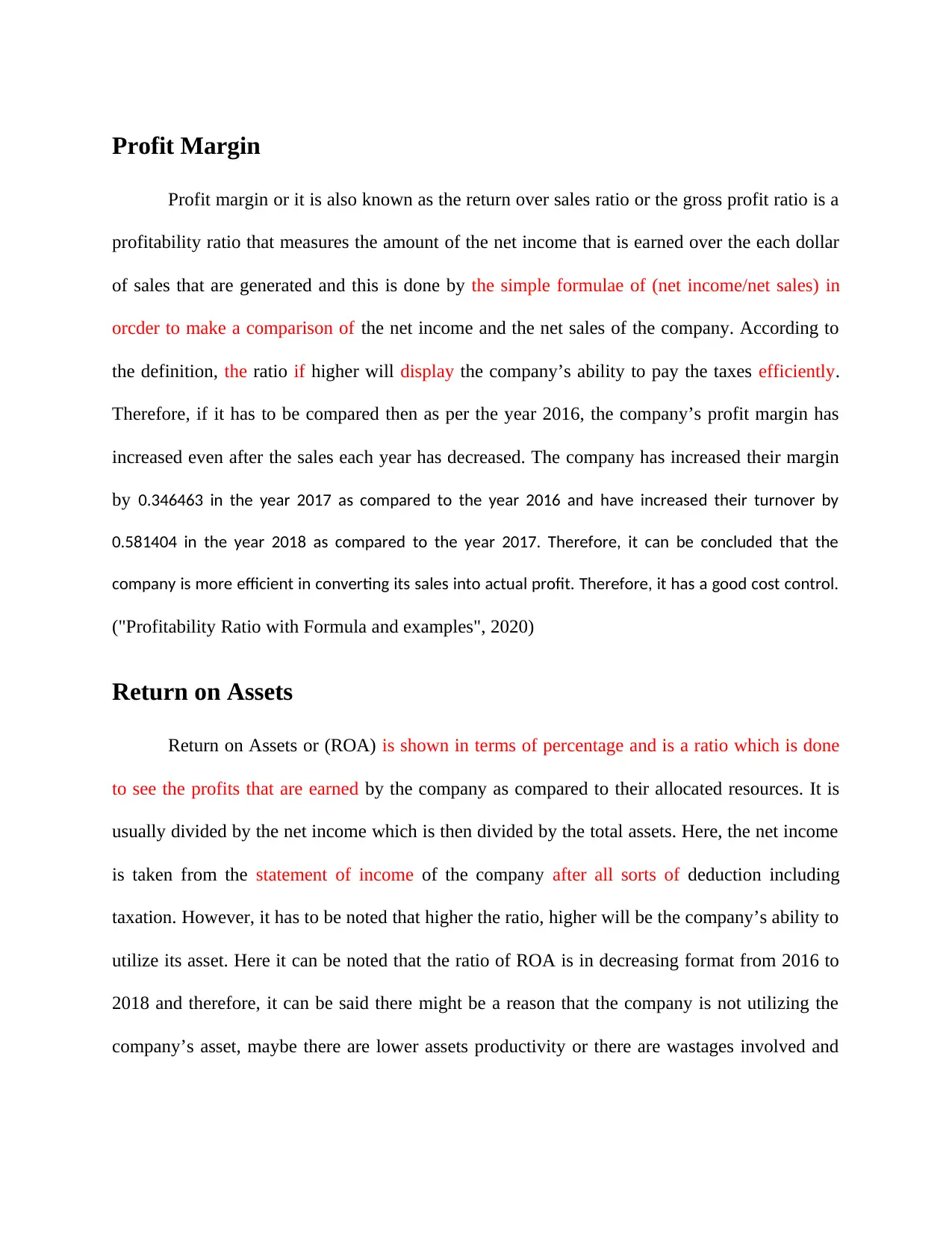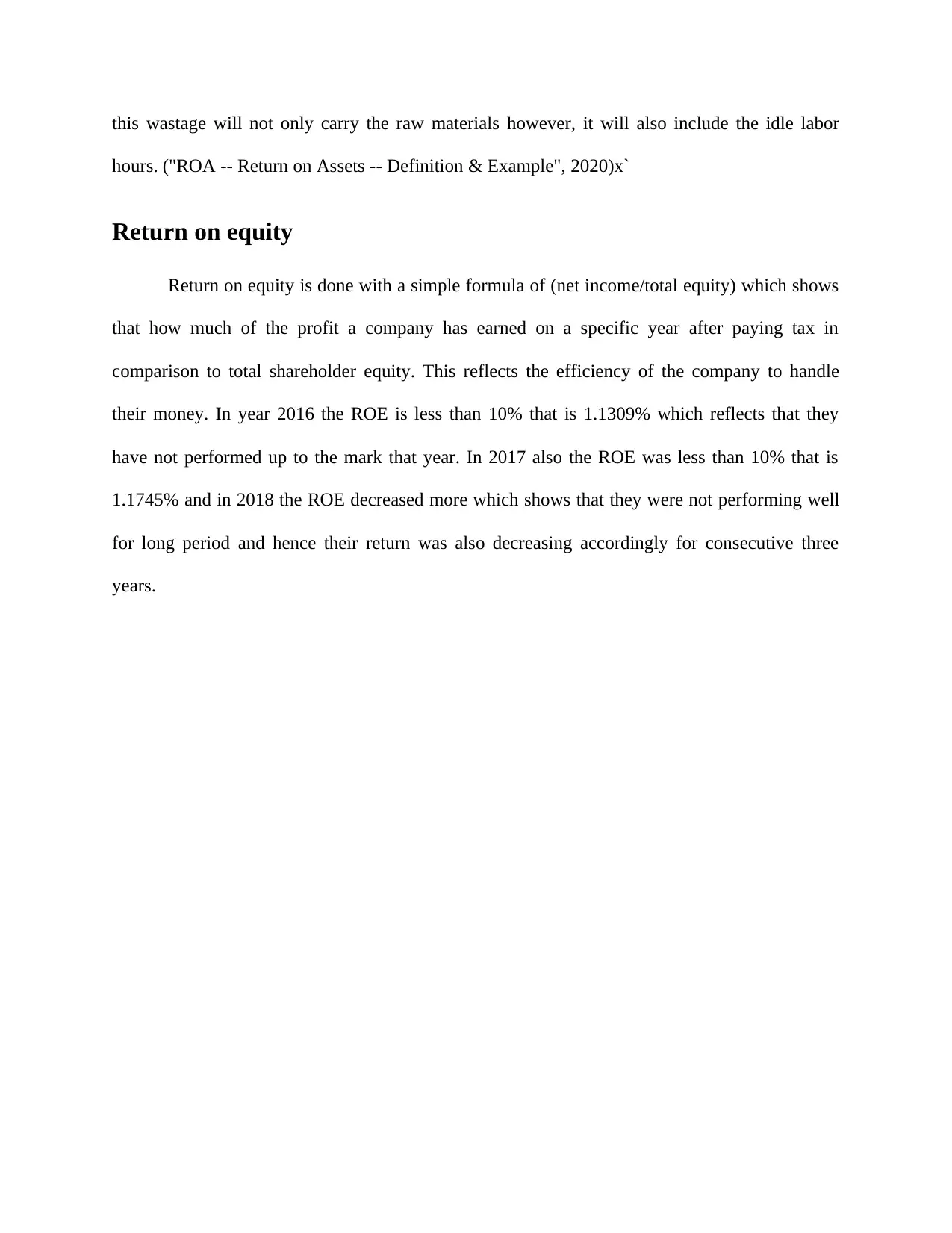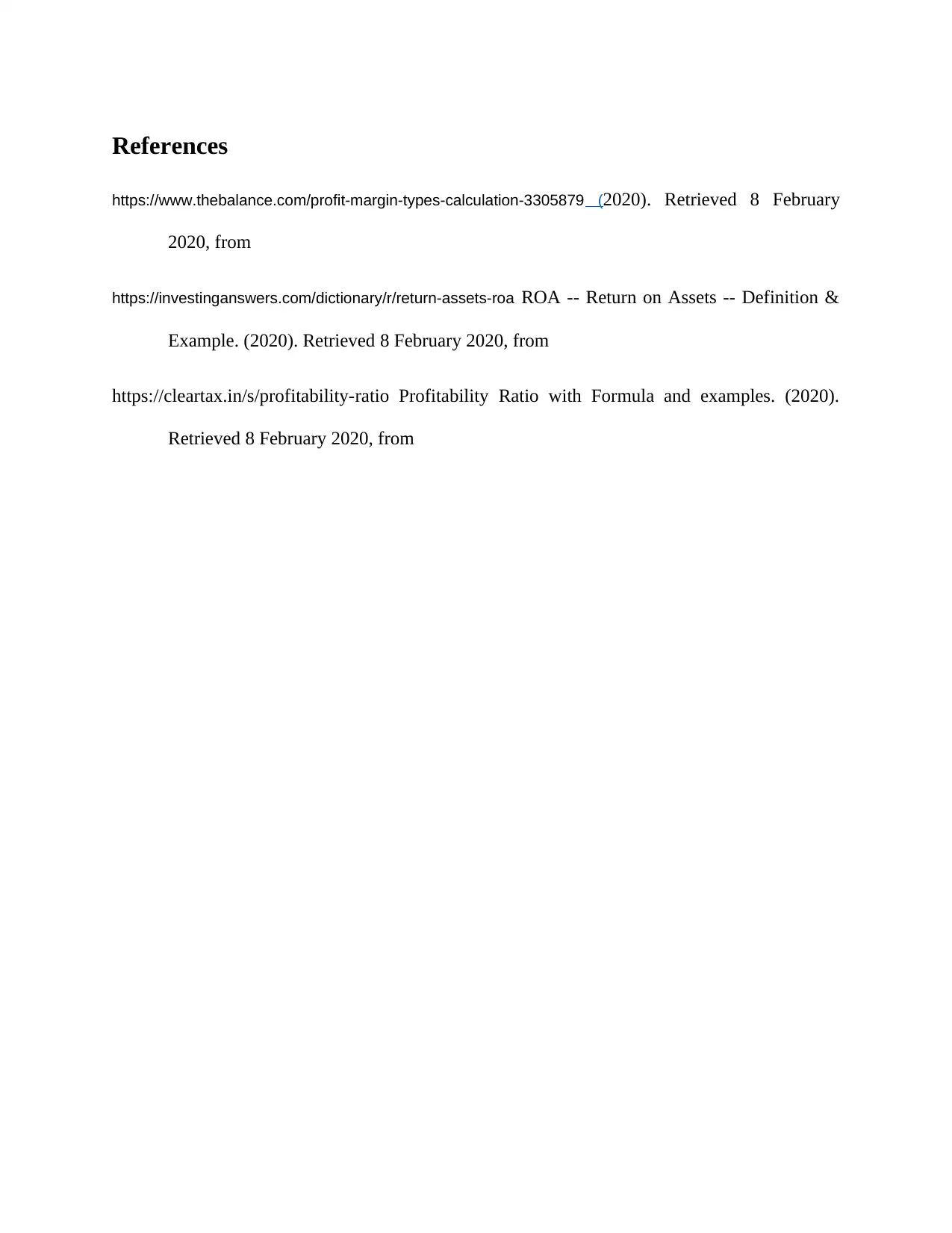Financial Ratio Analysis and Company Performance Report
VerifiedAdded on 2022/08/14
|4
|606
|15
Report
AI Summary
This report provides an analysis of key financial ratios, including profit margin, return on assets (ROA), and return on equity (ROE), to evaluate a company's financial performance. The analysis utilizes financial data to assess the efficiency of converting sales into profit, asset utilization, and shareholder returns. The report highlights trends in these ratios over a period, drawing conclusions about the company's financial health and efficiency. The student's work demonstrates an understanding of financial statement analysis and the practical application of profitability ratios. The report includes calculations, interpretations, and conclusions regarding the company's financial standing.
1 out of 4











![[object Object]](/_next/static/media/star-bottom.7253800d.svg)